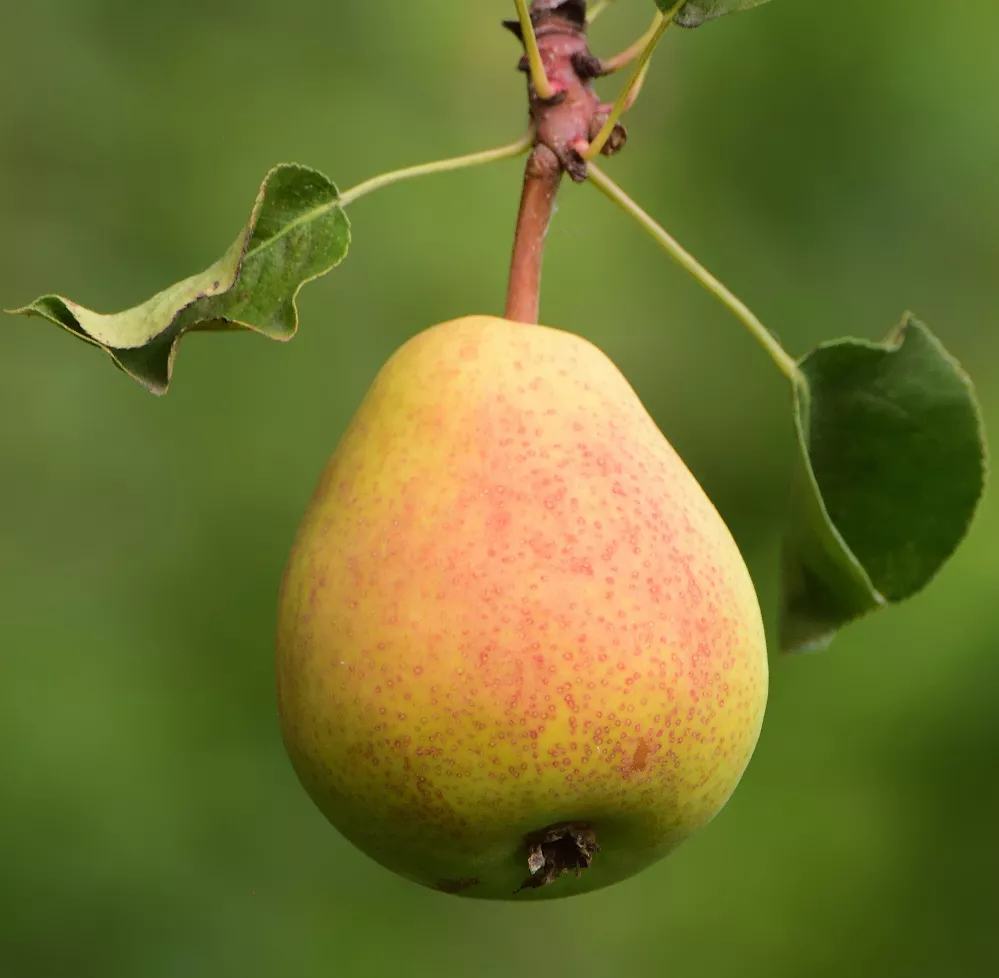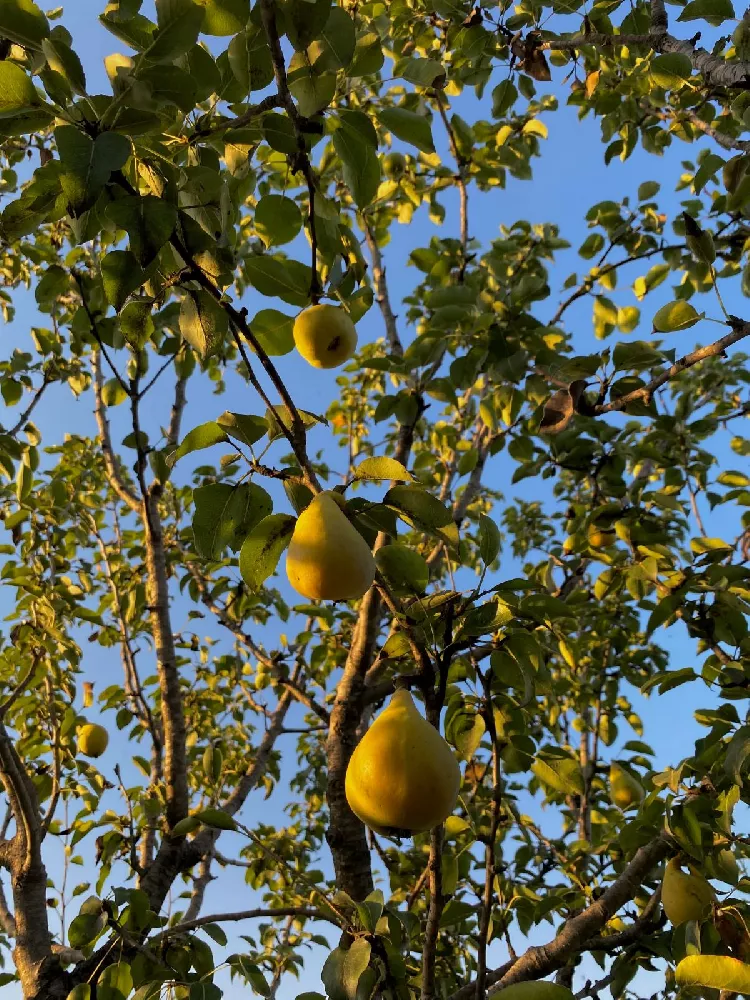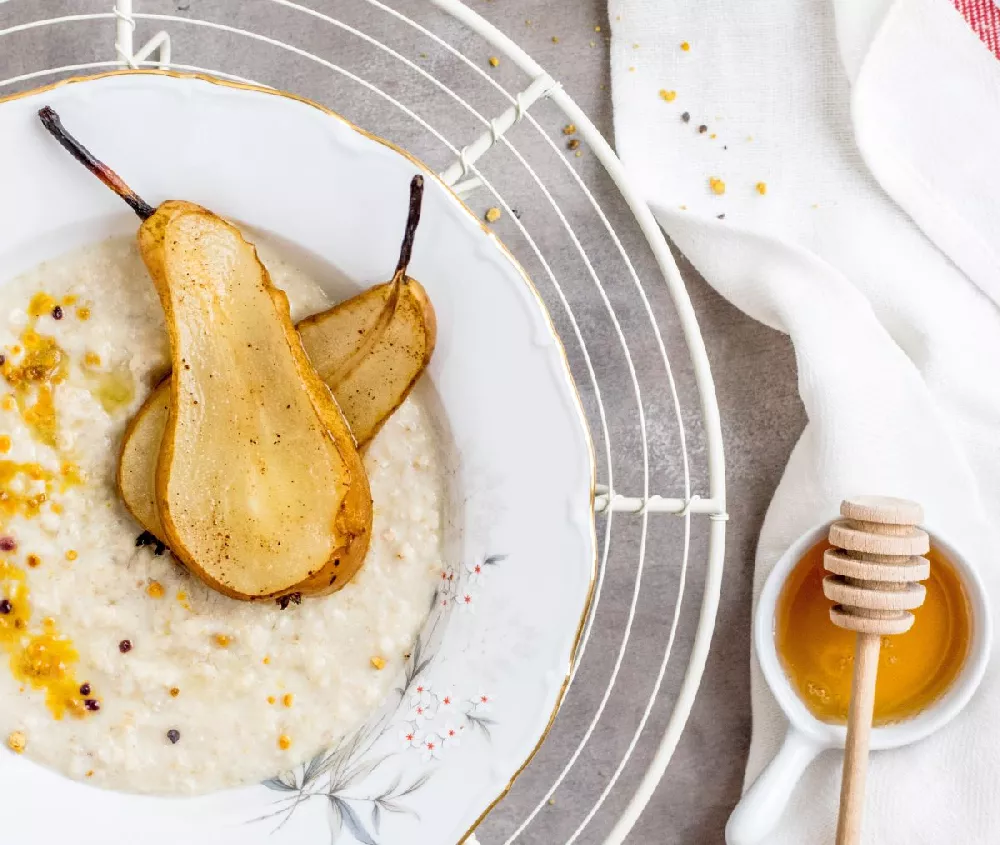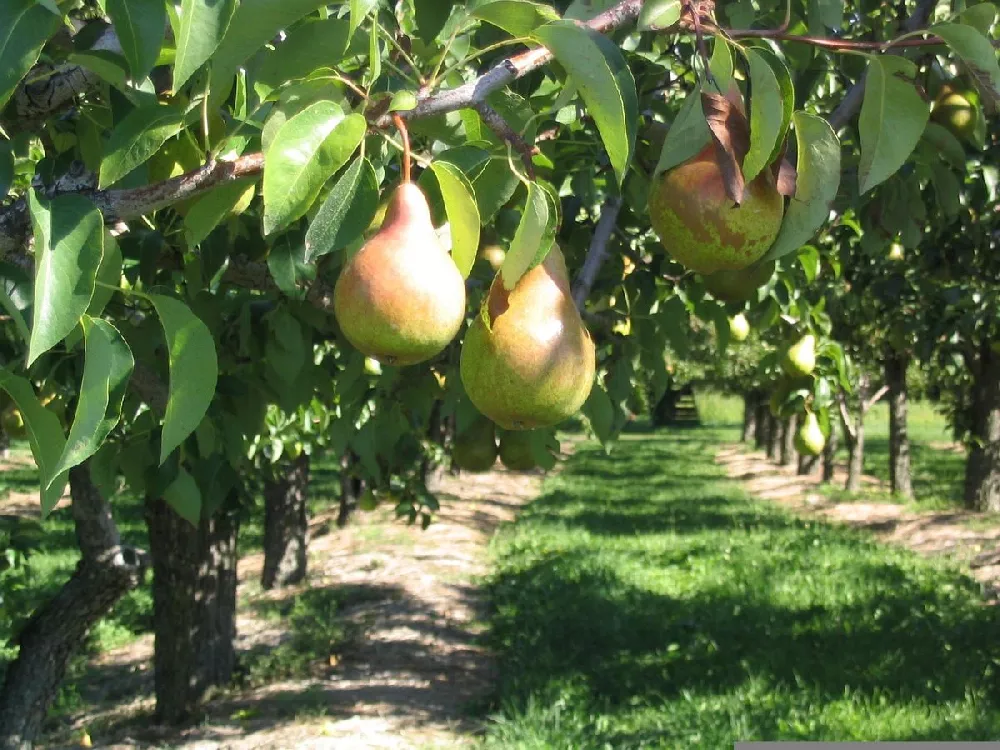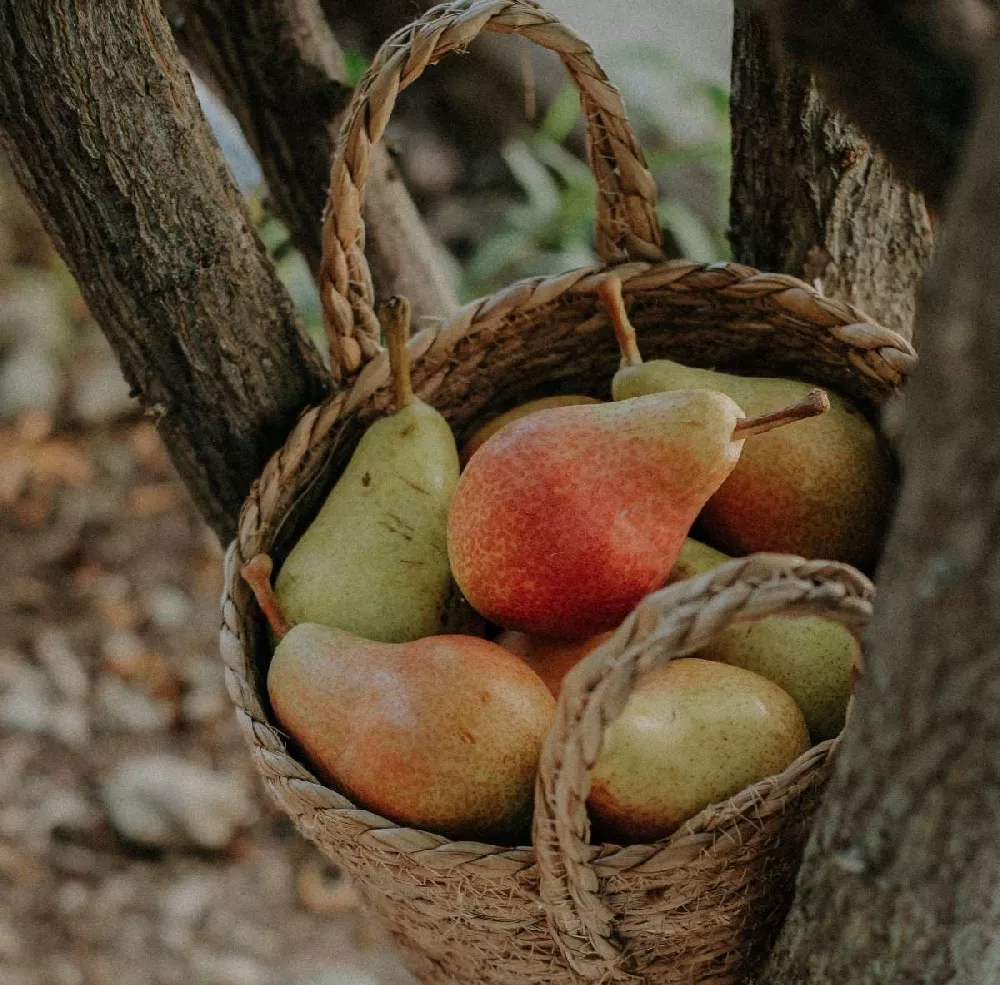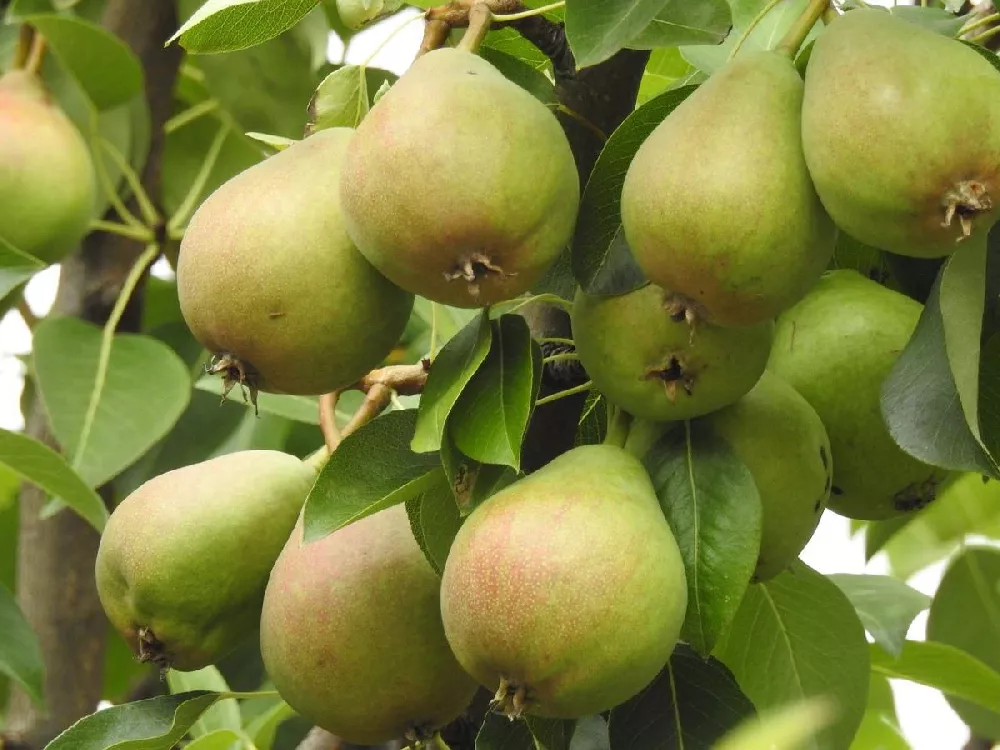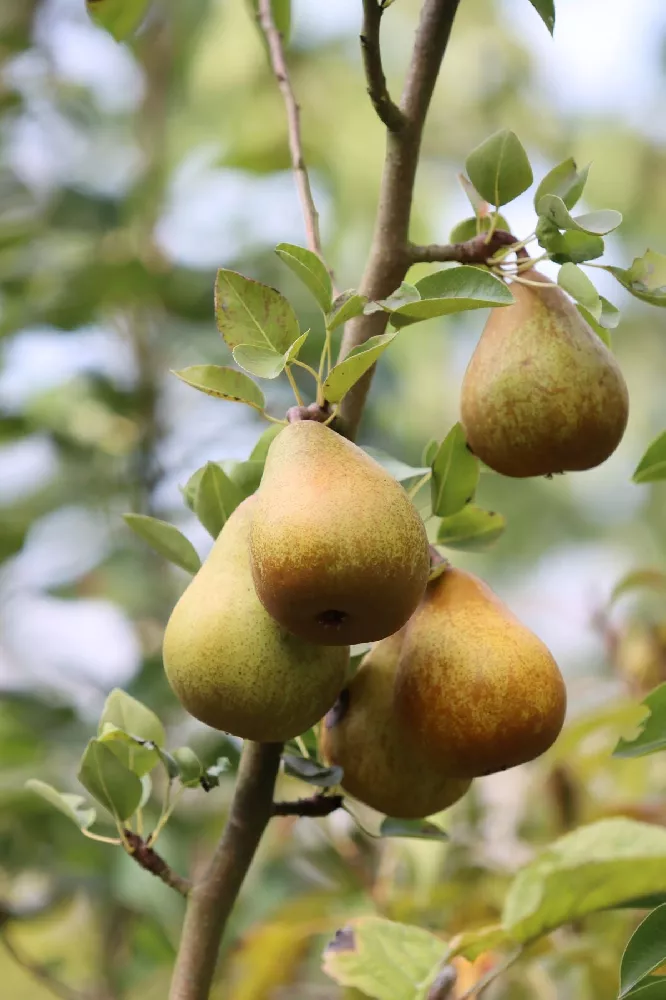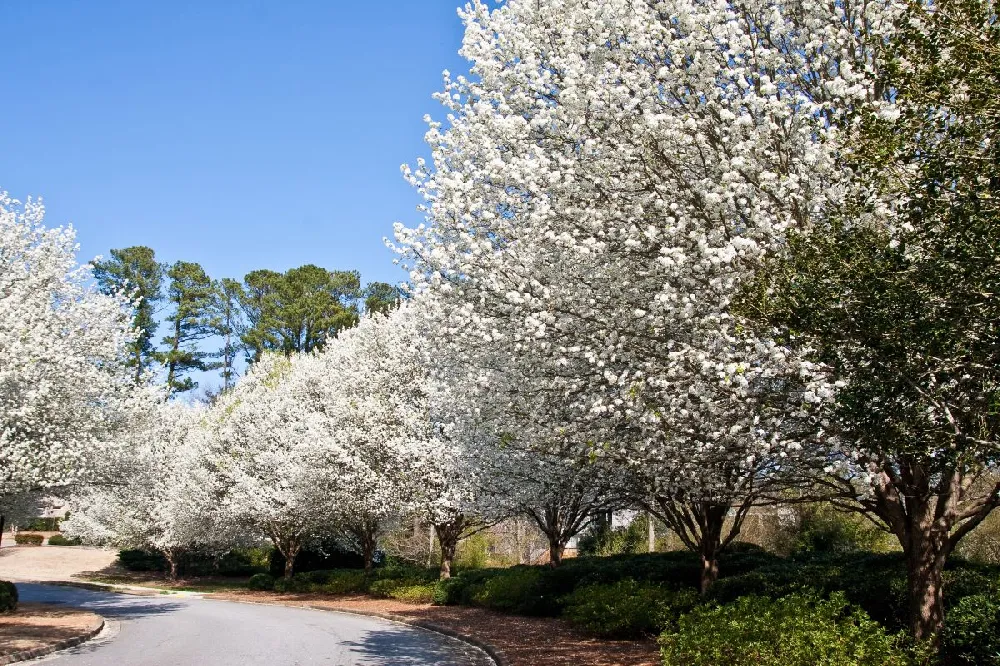- Home >
- Fruit Trees >
- Comice Pear Tree
Comice Pear Tree for Sale - Buying & Growing Guide
Sometimes called a “Christmas Pear” because it is often used as a gift during the holidays, the Comice Pear Tree, Pyrus communis 'Comice,' is a hardy, disease-resistant fruit tree that arguably produces the best-tasting pears of any cultivar. The fruit is excellent for fresh eating but really shines when used in cooking — and especially for desserts. In spring, the Comice Pear will be covered with lovely white blossoms that make it a garden showpiece. In summer, the attractive yellow-green fruit slowly ripens to a yellow blush, ready for picking in September. Fall sees the tree covered with red and yellow leaves, and in winter, its rounded silhouette is an attractive feature for any landscape. Here are some more reasons to consider adding this pear to your edible garden:
- Resistant to fire blight, which is a common disease of pear trees.
- Comice pears are often used in canning recipes, including sweet jams and jellies.
- The compact size makes it appropriate for smaller gardens.
Enter your zip code to find nearby stores that may carry this plant.
Plant Care
Sunlight

The Comice Pear Trees thrive in full sun—six or more hours of direct sunlight a day.
Watering
Water once a week or whenever the soil two inches below the surface is dry.
Fertilizing

Fertilize in early spring with a balanced, slow-release product designed for fruit trees.
Planting and Care
Planting instructions
Site your Comice Pear Tree in well-drained soil that receives at least six hours of direct sunlight each day. These trees thrive in soil that has a pH of roughly 6.5 and is high in organic matter. Unpot your sapling and tease out any encircling roots, which can girdle the tree and slowly kill it. Soak the roots in a bucket of water while you dig a hole that’s as deep as the root ball and twice as wide. Place the tree in the hole, spreading out the roots. Holding it upright and steady, fill in around the roots with topsoil mixed with hummus, tamping down as you go to eliminate air pockets. Water thoroughly. Build up a short three to four-inch berm about a foot away from the trunk to keep water near the root zone. Apply a two to three-inch layer of organic mulch such as bark chips around the root zone to conserve moisture and hinder weed growth but keep it from touching the trunk to avoid problems with rot.
Watering and nutrients
When newly planted, water your sapling every few days unless you receive rainfall. Once you see signs of robust new growth, you can taper back watering to once a week. The Comice Pear trees like soil that is evenly moist but not soggy. To know if it needs water, check the soil two inches below the surface — it should feel like a wrung-out sponge. If it’s dry, give your tree a good drink. Fertilize in early spring with a slow-release fertilizer that is designed for fruit trees and shrubs.
Pollination
The Comice Pear tree is not self-fertile, and you will need to plant another pear tree nearby so that pollinating insects can fertilize the flowers that lead to fruit. Effective pollinators for this variety include D’Anjou Pear Trees, Bartlett Pear Trees and Bosc Pear Trees.
Pruning
When pruning your Comice Pear Tree, use angled cuts that are close to a bud facing in the direction you’d like the limb to grow. Cut out any dead, diseased or damaged limbs whenever you see them. In late winter, prune out narrow-angle branches, trimming the tree so that there is a single central leader (branch), with lateral branches spaced evenly around it and a fairly open canopy so that air and light can circulate. Also, prune out any suckers that appear near the base of the trunk, and any branches that are rubbing against each other.
Pests, diseases, and animals
Pests that you may find on your pear tree include aphids, leafrollers and scale insects. Horticultural oil or insecticide soap may help as a last resort, but a healthy tree can often fend off infestations on its own. Diseases of the pear tree include crown gall, Septoria leaf spot and fire blight, although the Comice Pear has some resistance to this common ailment. Fire blight shows itself as withered or “scorched” leaves and branches. Prune out infected areas and discard them. Fire blight spray may also be used.
Harvesting
Pear trees generally start producing a full crop of fruit four to six years after planting. They are picked when they are still firm. Wait until one or two have dropped off the tree — this is a sign that the rest are ready. They should release from the branch easily. Place them in a room-temperature setting for several days to further ripen. The fruit should remain fresh for up to four months if stored in a cool location.
Achieving maximum results
Growing fruit trees can be intimidating to some gardeners, but it doesn’t have to be difficult. Consider pruning, for example. It can seem complex, but in reality, there is no one “right” way to do it, and the tree will do fine even if one branch too many is pruned out. Other gardeners worry about spraying their trees for pest and disease control. Here, a good resource is your local cooperative extension office. An agent there can tell you what sort of insects are common in your region, what diseases you might see on your tree, and what you can use to protect your tree. Generally, spraying is done anytime between late winter/early spring and after the petals drop in late spring. A copper fungicide can control many fungal diseases, and horticultural oil is often used for a variety of insect pests.
FAQs
Where can I grow the Comice Pear Tree?
Comice Pears grow throughout much of the continental U.S. They are hardy in USDA hardiness zones five through nine. That means that they can grow as far north as coastal Maine and the Pacific Northwest, and as far south as Texas and most of Florida.
How big does the Comice Pear get?
These are medium-sized fruit trees, with a mature height of 12 to 18 feet, and a corresponding width of 12 to 18 feet. Comice Pears grow fairly fast; so, you can expect them to achieve their full height within a decade or so.
Are Comice Pears good to use in an ornamental garden?
Yes. These stately trees bring grace and elegance to a garden setting, especially when they are covered with blooms in the spring or ripening pears in the fall. Consider growing several near the back of a perennial bed that features shade-loving plants such as hostas and astilbes, for example.
Compare Similar Products
You can't add more Product Name - Product size to the cart.
OK